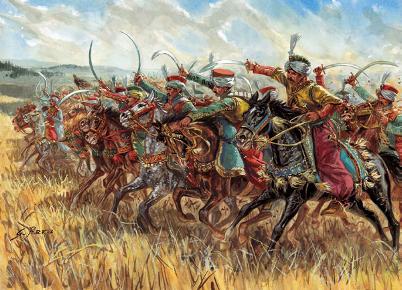
The Mamluks: The Last Bastion of The Islamic World from The Mongol Invasion
By: Tegar S. Ahimza (Member of MPI PW Muhammadiyah Central Java, History Observer and Professional Copywriter)
PWMJATENG.COM – In the mid-13th century, the Islamic world was under great threat from the brutal expansion of the Mongol Empire that had destroyed many major cities and kingdoms. One of the greatest tragedies in Islamic history occurred in 1258, when Hulagu Khan, grandson of Genghis Khan, invaded Baghdad and destroyed the Abbasid Caliphate, the center of the Islamic Caliphate for more than five centuries. Amidst this chaos, a new military force emerged from Egypt: the Mamluks. They not only retaliated against the Mongols, but also established their own glory as protectors of the Islamic world for centuries.
The Origins of the Mamluks
Mamluk comes from the Arabic word mamlūk (مملوك) meaning “the owned.” Initially, the Mamluks were military slaves recruited from the Turkic, Kipchak, Caucasian, and later Balkan peoples, who were rigorously trained in military camps in Egypt and Syria. They were released after completing their training and were given positions as elite soldiers under the Ayyubid Sultanate. However, after the death of the last Ayyubid Sultan, Shajar ad-Durr, the Mamluks managed to seize power and establish their own dynasty in 1250 CE, known as the Mamluk Sultanate.
Victory Against the Mongols: Battle of Ain Jalut (1260 CE)
After the destruction of Baghdad, the Mongols continued their expansion westward. Cities such as Aleppo and Damascus fell. However, this expansion was halted in Palestine, precisely at Ain Jalut, when the Mamluk forces under the leadership of Sultan Qutuz and his general, Baibars, blocked the Mongol advance.
At the Battle of Ain Jalut (September 3, 1260), the Mamluk forces defeated the Mongol forces led by Kitbuqa. This was the first time the Mongols were defeated openly in a land battle, and this victory changed the course of Islamic and world history. [Amitai, Reuven. “The Mongol Invasions of Bilad al-Sham and al-Jazira (1260–1300).” In The Cambridge History of Egypt, Vol. 1, 1998]
The Golden Age of the Mamluk Empire
After the victory at Ain Jalut, the Mamluks took control of Egypt, the Levant, and parts of the Arabian Peninsula. Sultan Baibars (r. 1260–1277) strengthened their power by expanding their territory, establishing a strong administrative system, and moving the symbols of the Abbasid Caliphate to Cairo as a form of spiritual legitimacy.
Baca juga, Haji Mabrur: Antara Ukhrawi dan Duniawi, Antara Permintaan dan Pujian
The Mamluks were also known as the protectors of the two holy cities, Mecca and Medina, and as masters of important trade routes between East and West. During the reign of Sultan al-Nasir Muhammad (r. 1293–1341), Mamluk culture and economy reached their peak. Cairo became a center of learning, architecture, and trade in the Islamic world.
Decline and Defeat by the Ottomans
The Mamluks began to decline in power in the late 15th century due to a variety of factors: corruption in government, economic stagnation, disease outbreaks (such as the Black Death), and an inability to adapt to advances in military technology (such as firearms and artillery).
This decline was exploited by a new power from Anatolia: the Ottoman Empire. Under Sultan Selim I, Ottoman forces made expeditions into Syria and Egypt. In the Battle of Marj Dabiq (1516) and the Battle of Ridaniya (1517), the Mamluks suffered major defeats. The last Mamluk sultan, Tuman Bay II, was executed, and their territory was integrated into the Ottoman empire. [Winter, Michael. “Egyptian Society Under Ottoman Rule, 1517–1798.” Cambridge University Press, 1992.]
The Legacy of the Mamluks
Although the Mamluks collapsed, their legacy remains strong in Islamic history. They are remembered as the last defenders of the Islamic world from the utter destruction of the Mongol invasion, and as the protectors of the holy land and the center of Islamic civilization in Cairo. Their system of military training and government also became a model for several military powers that followed, including the Ottoman Empire in its early centuries of glory.
The Mamluks were not only a formidable military force, but also a symbol of the Islamic world’s resilience in the face of existential threats. From trained military slaves, they rose to become the legitimate rulers of the Islamic world, stemming the Mongol tide, protecting the holy land, and building one of the most impressive Islamic civilizations in history. Although they were eventually defeated by new powers, their mark remains in the memory of Islamic and world history.
References:
- Amitai, Reuven. Mongols and Mamluks: The Mamluk-Ilkhanid War, 1260–1281. Cambridge University Press, 1995.
- Holt, P.M. The Age of the Crusades: The Near East from the Eleventh Century to 1517. Pearson, 1986.
- Winter, Michael. Egyptian Society Under Ottoman Rule, 1517–1798. Cambridge University Press, 1992.
- Irwin, Robert. The Middle East in the Middle Ages: The Early Mamluk Sultanate, 1250–1382. Southern Illinois University Press, 1986.
Ass Editor : Ahmad; Editor : M Taufiq Ulinuha





